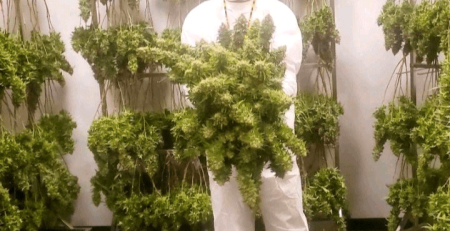The Silent Threat: HLVd’s Negative Impact on the Cannabis Industry:
Hop Latent Viroid (HLVd) has emerged as a significant concern within the cannabis industry, posing potential threats to both cultivation practices & overall market stability.
This microscopic pathogen, though often overlooked, can have profound & far-reaching consequences on cannabis crops, leading to diminished yields, economic losses, and increased operational challenges.
Understanding HLVd:
HLVd is a small, single-stranded RNA pathogen that primarily affects cannabis plants. Its ability to remain dormant for extended periods makes it difficult to detect, allowing it to silently spread within cannabis crops.
Once activated, HLVd disrupts normal plant development, affecting key physiological processes & ultimately impacting the quality & quantity of cannabis yields.
1. Reduced Yields & Quality
One of the primary negative impacts of HLVd on the cannabis industry is the reduction in yields & compromised product quality. Infected plants often exhibit stunted growth, decreased flower production, & an increased susceptibility to other pathogens. This not only diminishes the overall harvest but also lowers the potency & market value of the final cannabis products.
2. Economic Losses
HLVd-induced crop losses translate directly into economic setbacks for cannabis growers. With the cannabis industry operating on thin profit margins, any reduction in yield can lead to financial strain for growers. Additionally, the cost of implementing control measures & potential crop destruction further adds to the economic burden, making it imperative for cultivators to invest in preventive strategies.
3. Operational Challenges
The presence of HLVd introduces operational challenges for cannabis growers, requiring them to adopt stringent biosecurity measures. Infected plants must be identified & isolated promptly to prevent the spread of the viroid. This demands increased vigilance, regular testing, & a thorough understanding of cultivation practices, adding complexity to an already intricate industry.
4. Market Instability
As HLVd continues to pose a threat to cannabis crops, it contributes to market instability. Fluctuations in supply due to reduced yields can lead to increased prices for consumers, potentially impacting the competitiveness of legal cannabis markets. The uncertainty surrounding the viroid’s prevalence further complicates market dynamics, affecting investor confidence and industry growth. The negative impacts of HLVd on the cannabis industry are multifaceted, ranging from diminished yields & economic losses to operational challenges & market instability.
In conclusion, as the industry grapples with this silent threat, proactive measures such as rigorous testing, quarantine protocols, & research into resistant strains become crucial for mitigating the adverse effects of HLVd & safeguarding the future of the #cannabis sector.
Photo Credit: Zamir Punja, PhD
HLVd ❌️ & Normal Plant ✅️












Leave a Reply